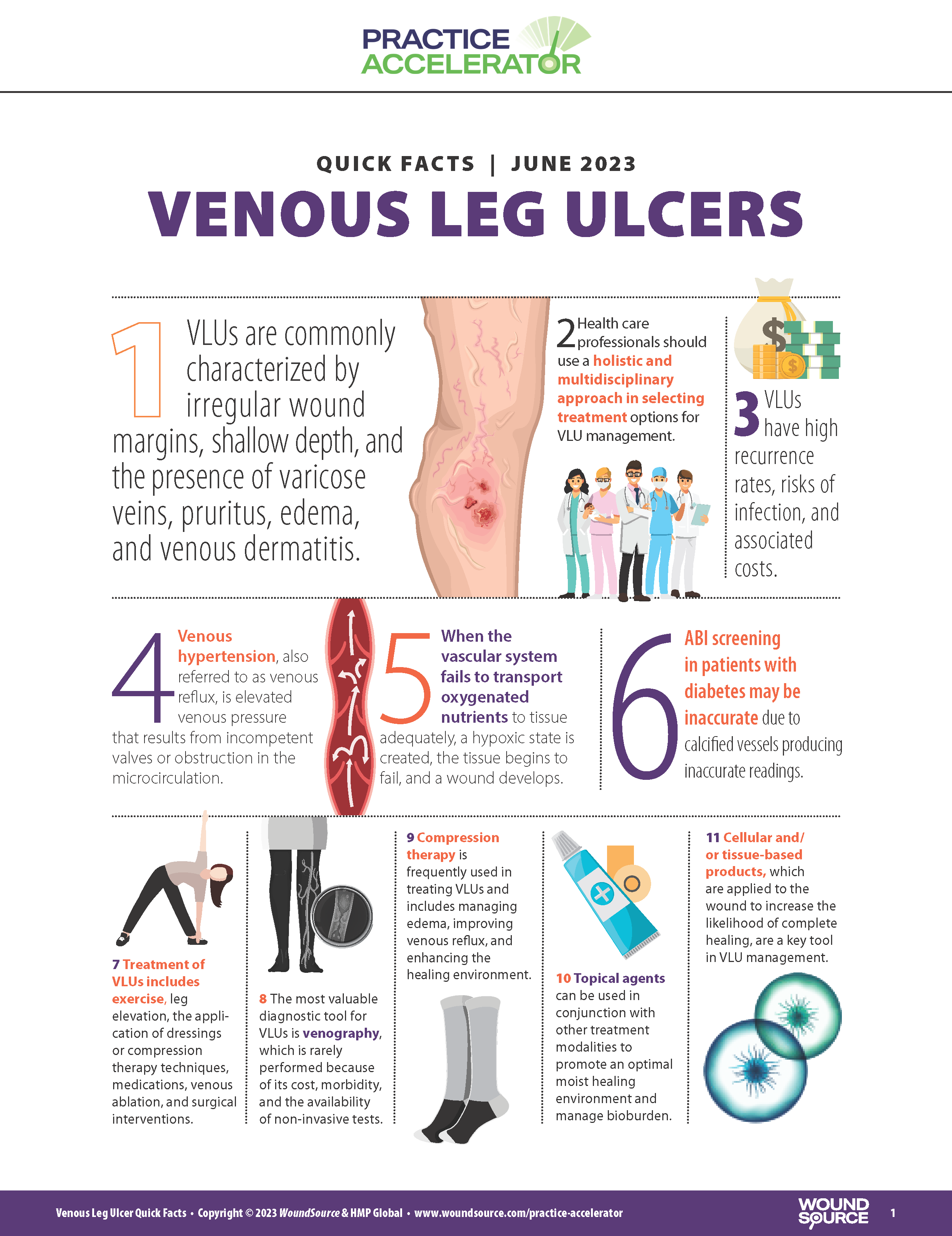
Venous Leg Ulcer Management
For this month's WoundSource Practice Accelerator series, we are providing education on a variety of topics related to the management of venous leg ulcers. Scroll below to read this month's white paper and articles, to print out our quick fact sheet, and to view other resources.
Upcoming Webinar
Understanding Venous Leg Ulcers
Thursday, June 1Amy Tucker, MD
A strong foundational understanding is paramount in optimizing outcomes for venous leg ulcers. This webinar, originally part of our September 2021 Practice Accelerator, breaks down many key concepts clinicians should know. In conjunction with the rest of the Practice Accelerator program, wound care professionals will be able to combine classic, enduring information, along with some of the latest viewpoints on this challenging condition.
During this program participants will learn:
- The causes of venous ulcers
- Evaluation of patients with venous ulcers
- Procedural interventions that can help reach closure in venous ulcers
- The role of compression therapy in venous ulcer management
- Medications and topical therapy effective in treating venous ulcers
- Lifestyle and cost considerations in the management of venous ulcers
White Paper
Venous Leg Ulcers: Introduction to Management Techniques
<p>Venous insufficiency results from venous hypertension, which, left untreated, can lead to skin breakdown and the formation of venous leg ulcers (VLUs). VLUs are common and, unfortunately, stubborn chronic wounds that diminish patients' quality of life, contribute to morbidity and mortality, and are costly to treat.</p> ...Fact Sheet
Quick Facts - Venous Leg Ulcer Management
Venous leg ulcers (VLUs) are often precipitated by trauma in the setting of chronic venous insufficiency. VLUs are the most common type of chronic lower extremity ulcerations. Complications can include infection, malignancy, amputation, and even death. Proactive VLU management is crucial for healing and preventing recurrence. With the use of therapeutic compression and appropriate dressings, you and your staff can aid VLU healing, reduce recurrence rates, and improve your patients’ quality of...Featured Articles
Venous Leg Ulcers: Why Should Clinicians Use the CORE Protocol?
Windy Cole, DPM discusses why the CORE protocol is essential for venous leg ulcer (VLU) treatment and how to prevent VLU recurrence....
Read MoreVenous Leg Ulcers and Infection
The venous leg ulcer (VLU) is the most common type of chronic leg wound, and it can be challenging to manage. VLUs account for up to 90% of all chronic leg ulcers. Proper diagnosis and treatment planning are key to wound healing outcomes. This fact is particularly true for older adults, who have an ...
Read MoreClinical Pathways for Management of Venous Leg Ulcers
Venous ulcers are known to be complex and costly. There is an array of evidence-based treatment options available to help formulate a comprehensive treatment plan toward wound closure. Health care professionals should utilize treatment options while encompassing a holistic approach to venous ulcer m...
Read More








